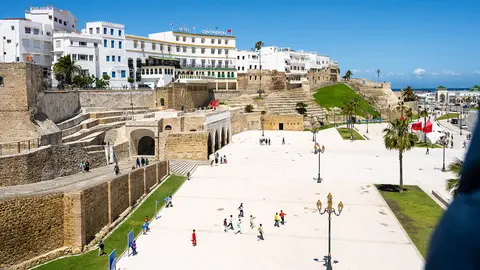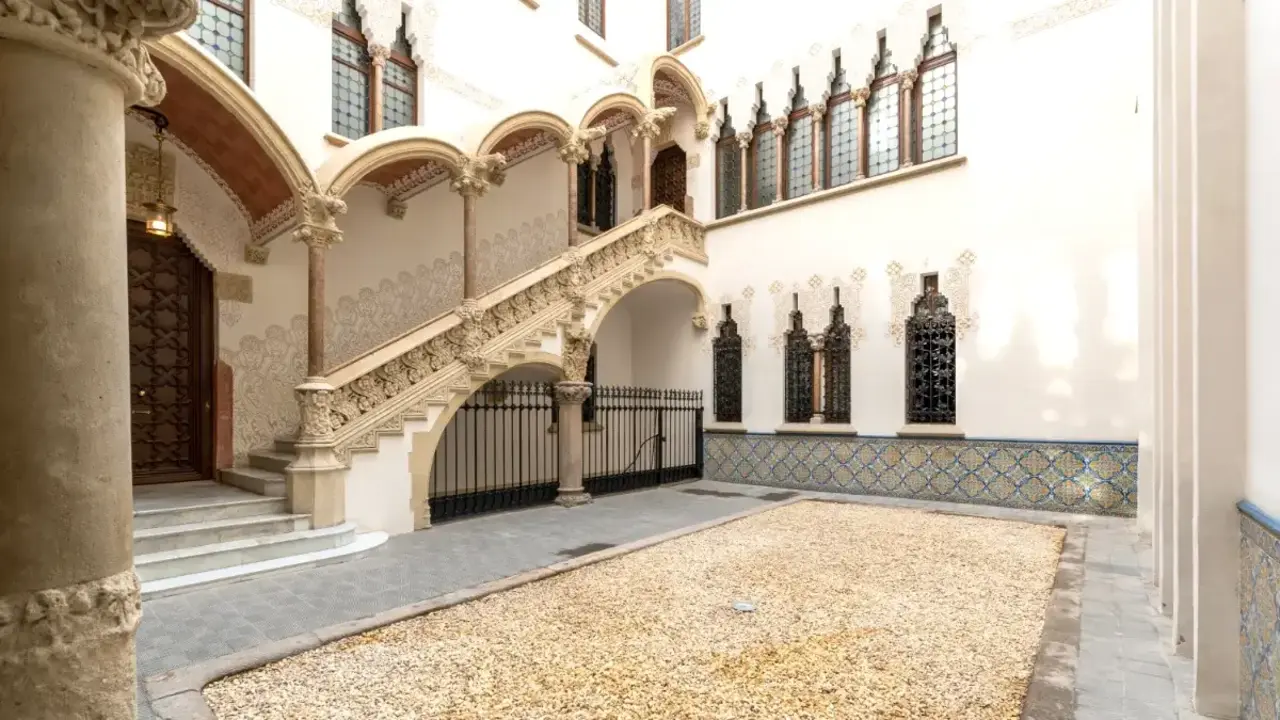Assilah, expanding tourism and cultural quality for Tangier
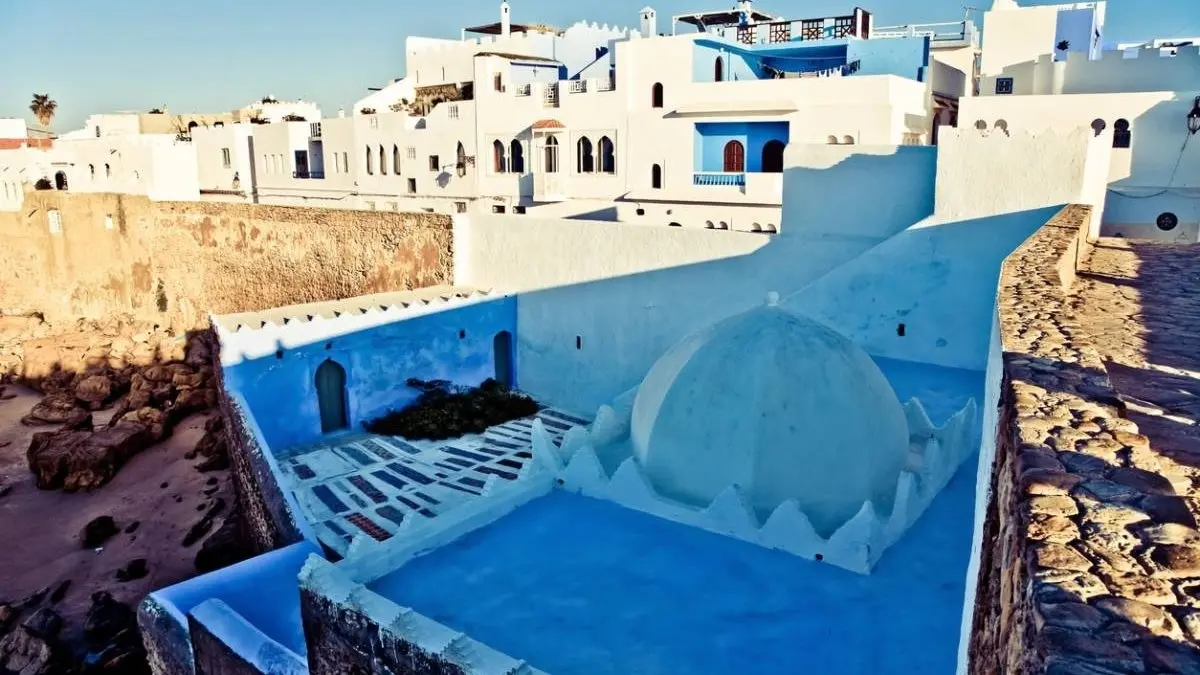
- 1. Context and justification
- 2. Project objectives
- 3. Preliminary technical study
- 4. Future development opportunities in Asilah
- 5. Expected socio-economic impacts
- 6. Conclusion
1. Context and justification
Assilah, an iconic coastal town in northern Morocco, is renowned for its cultural heritage, white medina, Portuguese ramparts, and arts festivals. However, the current railway line runs through the city along its seafront, blocking its natural development towards the sea and hindering its tourist and economic appeal. In addition, the city of Tangier, the economic and industrial engine of the north, is gradually reaching its physical and infrastructural limits. In this context:
· Assilah represents the natural territorial continuity of Tangier's expansion towards the south;
· It already benefits from a strategic location 40 minutes from Tangier and 20 minutes from Ibn Batouta Airport, connected by motorway and rail.
· Anticipating this regional growth requires urban and logistical restructuring to begin now, starting with the relocation of the railway line.
Relocating this line along the A1 motorway would free up a strategic axis for:
- Enhancing the coastline through infrastructure and leisure projects, which is currently cut off and, above all, stifled by the passage of the railway line.
- Reduce urban nuisances caused by the passage of trains in residential areas. In addition, the blockage between the two areas with tourism projects is hindering any progress towards thoughtful urbanization that takes into account the evolution of our region and its very near future.
This track poses a real danger to people and vehicles crossing the tracks. Assilah has a sad record of deaths caused by train accidents.
This track has existed since Spanish colonization and has never been moved, thus creating a physical barrier between the coastline and the tourist development zone according to the development plan. This area covers approximately 1,130 hectares, see map in the appendix.
Furthermore, thanks to the economic expansion that our region and Morocco in general are currently experiencing, we are now seeing something that was not there before: dozens of wagons carrying cars or containers pulled by a single locomotive, several times a day. It should be noted that they are only passing through Assilah and do not need to stop.
The increase in rail traffic in Assilah causes noise pollution from their sirens, which alert people and cars of their passage late at night and early in the morning.
- Create a new transport hub at the motorway exit.
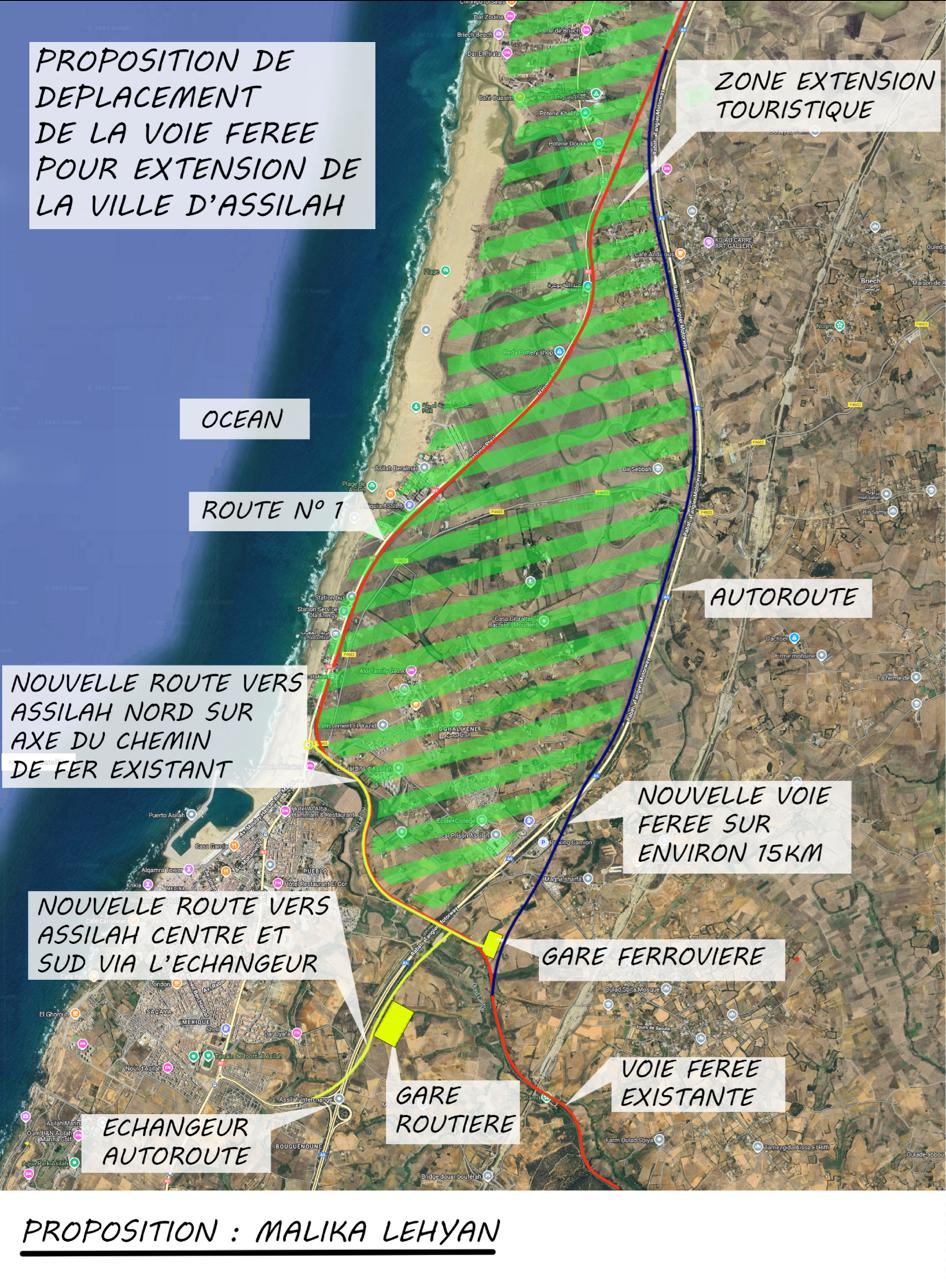
2. Project objectives
Move the railway line to a route parallel to the A1 motorway.
- Build the new railway station at the Assilah motorway exit, with a direct connection to the motorway network following the route shown on the map.
- Create a multimodal bus station (buses, intercity coaches) right next to the railway station. The current bus station is closed because it is too far from the motorway. Coaches prefer to drop passengers off at the side of the motorway.
- Redevelop the old railway corridor into a tourist boulevard, cycle path, shops, green spaces, and sports facilities.
- Develop a modern marina in the port of Assilah, integrated into a revitalized waterfront, to attract nautical and cruise tourism. This will be done in a second phase.
Strengthen Assilah's economic, tourist and logistical attractiveness as part of regional development.
3. Preliminary technical study
Railway line moved by 15 km: to be confirmed by topographical studies.
New multimodal station: direct access via the Assilah motorway exit, parking, taxis, local public transport.
Marina: development of the existing port into a tourist marina with a quay for pleasure boats, nautical services, restaurants, hotels, and art galleries.
Constraints to be anticipated: land, inter-institutional coordination, environmental impact, financing.
Total estimated cost: to be detailed according to studies (rail infrastructure, intermodality).
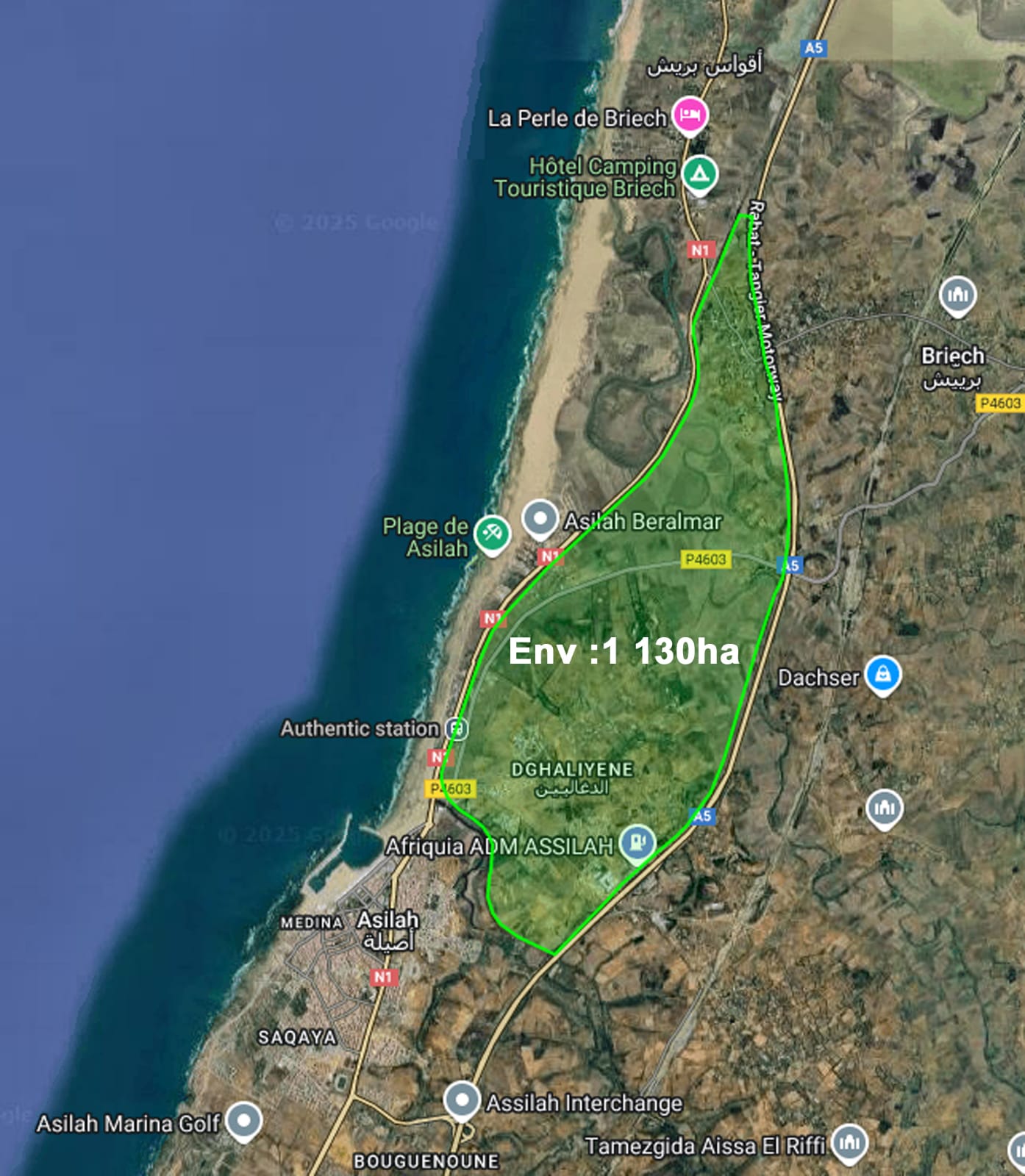
4. Future development opportunities in Asilah
a. Tourism
Full development of the seafront (beaches, marina, hotels, promenades).
Development of high-end tourism focused on heritage, art, and the sea.
Integrated projects (tourist residences, cafés, shops, pedestrian areas).
b. Industry and logistics
Creation of an extension to the industrial zone currently located near the motorway exit and the future railway station.
c. Agriculture
Modernization of local agricultural sectors.
Promotion of sustainable, organic agriculture and short supply chains.
Development of agrotourism projects (educational farms, discovery trails).
d. Culture and education
Extension of local artistic and folkloric initiatives (Assilah Festival) through permanent infrastructure on the seafront.
Cultural centers, art schools, artist residences.
Creation of universities and vocational training centers.
5. Expected socio-economic impacts
Creation of sustainable jobs in construction, tourism, agriculture, and crafts.
Increased private investment through the development of coastal land.
Enhanced tourist appeal at the national and international level.
New urban dynamic structured around mobility, culture, and the sea.
6. Conclusion
Assilah is currently at a strategic turning point in its history. It has huge development potential in all sectors. However, the current railway line is a major obstacle to the harmonious development of the city, blocking access to the seafront, fragmenting the urban fabric and preventing the creation of new attractions.
This project is much more than a simple technical redevelopment: it embodies a vision for the future of Assilah as a modern, attractive city that respects its identity and is fully integrated into the regional dynamism of northern Morocco.
A study project by Malika Lehyan, in her capacity as a member of parliament for the Tangier/Tetouan/Al Hoceima/Asilah region.


